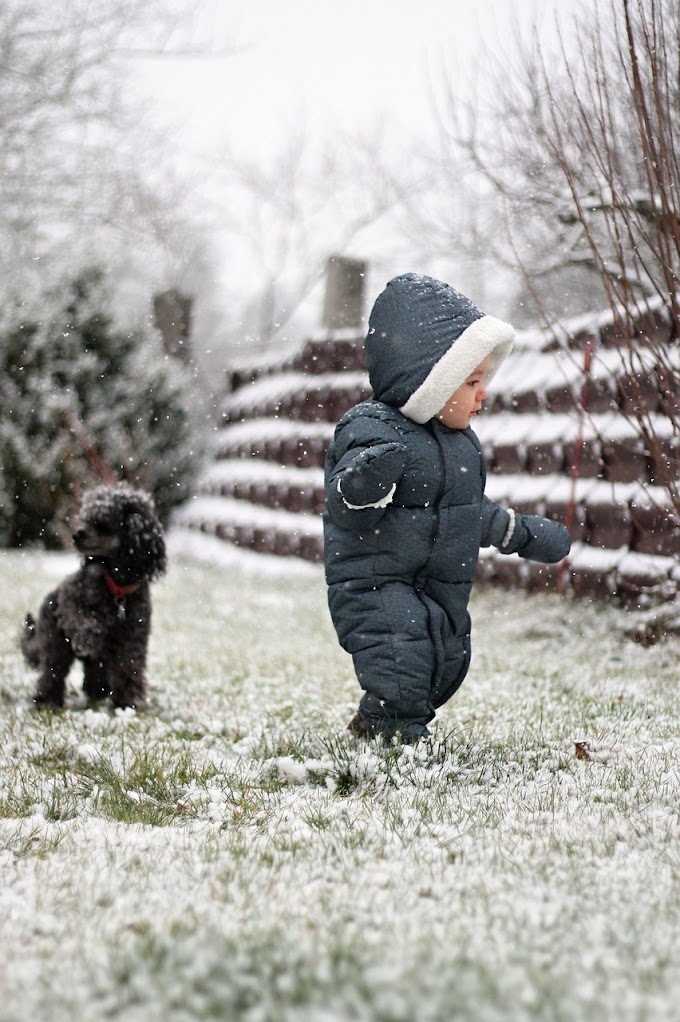Fever in Kids & Toddlers
Fever is a common occurrence in children and is usually a sign that the body is fighting off an infection. A fever is defined as a body temperature above 100.4 degrees Fahrenheit (38 degrees Celsius) and can be caused by a variety of factors such as viral or bacterial infections, vaccinations, teething, or exposure to extreme heat or cold.While a fever can be concerning, it is usually not harmful and can even be beneficial in helping the body fight off infections. If your child has a fever, it is important to monitor their temperature and provide them with plenty of fluids to stay hydrated.
Over-the-counter fever-reducing medications such as acetaminophen or ibuprofen can be given to reduce fever and discomfort. However, it is important to follow the dosage instructions carefully and to never give aspirin to a child with a fever as it can lead to a serious condition called Reye's syndrome.
While most fevers in children are harmless and go away on their own, it is important to seek medical attention if your child's fever lasts longer than a few days, is accompanied by other symptoms such as a rash or difficulty breathing, or if your child is younger than 3 months old. Your healthcare provider can help determine the underlying cause of the fever and recommend appropriate treatment.


Casue of Fever in Kids
Fever is a common symptom in children and can be caused by a variety of factors. Here are some common causes of fever in childrenInfection - The most common cause of fever in children is an infection, such as a cold, flu, or viral infection. Other infections, such as bacterial infections (such as strep throat or pneumonia), ear infections, or urinary tract infections, can also cause fever.
High body temperature - A fever is defined as a body temperature of 100.4°F (38°C) or higher, measured with a thermometer.
Encourage fluids - Drinking plenty of fluids is important when your child has a fever. Offer your child water, clear broths, and electrolyte solutions like Pedialyte to prevent dehydration. Avoid sugary drinks and caffeine, which can make dehydration worse.
Dress appropriately - Dress your child in lightweight clothing, such as cotton pajamas, to allow the skin to breathe. Avoid heavy blankets and comforters, which can trap heat and raise body temperature.
Overheating - Children can develop a fever when they are exposed to high temperatures, such as during hot weather or when they are overdressed. This is more common in infants and young children.
Teething - Teething can cause a low-grade fever in some children. This is due to the inflammation and irritation caused by the new teeth pushing through the gums.
Immunizations - Vaccinations can cause a low-grade fever in children, usually lasting one to two days after receiving the vaccine. This is a normal immune response and is not usually cause for concern.
Medications - Certain medications, such as antibiotics or antihistamines, can cause fever as a side effect.
Autoimmune disorders - Autoimmune disorders, such as lupus, rheumatoid arthritis, or juvenile idiopathic arthritis, can cause fever in children as the immune system attacks the body's own tissues.
Malignancies - Rarely, fever can be a symptom of a more serious underlying condition, such as leukemia or lymphoma.
Viral or bacterial infections - Fevers are often a symptom of viral or bacterial infections such as the common cold, flu, pneumonia, strep throat, or ear infections. These infections are usually accompanied by other symptoms such as coughing, runny nose, sore throat, or ear pain.
Environmental factors - Exposure to extreme heat or cold can cause a fever in children. Dehydration can also lead to a fever.
Immunizations - Some children may develop a fever after receiving certain vaccinations, such as the MMR (measles, mumps, rubella) or chickenpox vaccine. This is a normal reaction to the vaccine and usually goes away on its own within a few days.
Other medical conditions - In rare cases, a fever in children may be a sign of a more serious underlying medical condition such as autoimmune disorders, cancer, or inflammatory diseases.
It is important to note that a fever is not a disease in itself, but rather a symptom of an underlying condition. While most fevers are not serious and can be managed at home with home remedies and over-the-counter medication, some fevers can be a sign of a more serious condition and require medical attention.
Symptoms of Fever in Children
When a child has a fever, their body temperature is higher than normal, usually over 100.4 degrees Fahrenheit (38 degrees Celsius). In addition to an elevated body temperature, there are several other symptoms that may accompany a fever in kids, includingHigh body temperature - A fever is defined as a body temperature of 100.4°F (38°C) or higher, measured with a thermometer.
Shivering and chills - Children may experience shivering or chills as their body tries to regulate its temperature.
Muscle aches - Fever can cause muscle aches and pains, particularly in the legs and back.
Irritability - Children with a fever may be more irritable or fussy than usual.
Fatigue - Children with a fever may feel tired or sluggish and may want to sleep more than usual.
Loss of appetite - Fever can cause a decrease in appetite, which can lead to dehydration if fluids are not consumed.
Dehydration - Fever can lead to dehydration, which can cause symptoms such as dry mouth, decreased urine output, and dark yellow urine.
Rapid heartbeat - A high fever can cause an increase in heart rate, particularly in younger children.
Chills and shivering - Children with a fever may feel cold and experience shivering or goosebumps.
Headache - Fever can cause headaches or migraines in some children.
Muscle aches and weakness - Kids with a fever may feel achy and weak, and may not have the energy to participate in their usual activities.
Irritability or fussiness - Young children with a fever may be irritable, fussy, or inconsolable.
Sweating - Children with a fever may sweat more than usual as their body tries to regulate their temperature.
Rash - In some cases, a fever may be accompanied by a rash on the skin.
It is important to note that these symptoms may vary depending on the cause of the fever. If your child has a fever and is exhibiting any of these symptoms, it is important to monitor them closely and seek medical attention if necessary.
Fever is a common symptom in children, and can often be managed at home with simple remedies. Here are some effective home remedies for fever in kids
Home Remedies for Fever in Kids & Children
Fever is a common symptom in children, and can often be managed at home with simple remedies. Here are some effective home remedies for fever in kids
Encourage fluids - Drinking plenty of fluids is important when your child has a fever. Offer your child water, clear broths, and electrolyte solutions like Pedialyte to prevent dehydration. Avoid sugary drinks and caffeine, which can make dehydration worse.
Dress appropriately - Dress your child in lightweight clothing and use a light blanket if necessary. Avoid over-bundling, which can trap heat and make the fever worse.
Keep the room cool - Keep the room at a comfortable temperature and use a fan to circulate air. Avoid using too many blankets or coverings.
Use a cool compress - Place a cool, damp washcloth on your child's forehead or give them a tepid sponge bath to help lower their body temperature.
Give fever-reducing medication - Acetaminophen and ibuprofen are commonly used to reduce fever in children. Be sure to follow the dosage instructions carefully and avoid giving aspirin to children, which can lead to a serious condition called Reye's syndrome.
Offer comfort - Offer comfort to your child by reading to them, playing quiet games, or cuddling with them.
Use humidifiers - Humidifiers can help relieve congestion and coughing in children with fevers. Be sure to keep the humidifier clean to prevent the growth of bacteria and mold.
Dress appropriately - Dress your child in lightweight clothing, such as cotton pajamas, to allow the skin to breathe. Avoid heavy blankets and comforters, which can trap heat and raise body temperature.
Keep the room cool - Keep the room at a comfortable temperature, between 68-72 degrees Fahrenheit (20-22 degrees Celsius), and use a fan to circulate air. Avoid using too many blankets or coverings, and keep the room well-ventilated.
Use a cool compress - Place a cool, damp washcloth on your child's forehead, armpits, or groin area to help lower their body temperature. You can also give your child a tepid sponge bath by using lukewarm water and gently wiping their body.
Give fever-reducing medication - Acetaminophen (such as Tylenol) and ibuprofen (such as Advil or Motrin) are commonly used to reduce fever in children. Be sure to follow the dosage instructions carefully and avoid giving aspirin to children, which can lead to a serious condition called Reye's syndrome.
Offer comfort - Fever can make your child feel uncomfortable and irritable. Offer comfort to your child by reading to them, playing quiet games, or cuddling with them. This can help distract them from their discomfort and promote relaxation.
Use humidifiers - Humidifiers can help relieve congestion and coughing in children with fevers. Be sure to keep the humidifier clean to prevent the growth of bacteria and mold.
Herbal remedies - Some herbal remedies may help reduce fever in children. These include:
Chamomile - Chamomile tea can help reduce fever and promote relaxation in children. Brew a cup of chamomile tea and offer it to your child to drink.
Echinacea - Echinacea is an herb that may help boost the immune system and reduce fever. You can find echinacea supplements in health food stores, or give your child echinacea tea.
Ginger - Ginger has anti-inflammatory properties that may help reduce fever. You can give your child ginger tea or ginger ale to drink.
It is important to note that home remedies are not a substitute for medical treatment, and if your child's fever lasts for more than a few days or is accompanied by other symptoms, it is important to seek medical attention from a healthcare provider. Additionally, some children may have medical conditions that make home remedies unsuitable, so it's important to consult with your child's healthcare provider before trying any home remedies.






